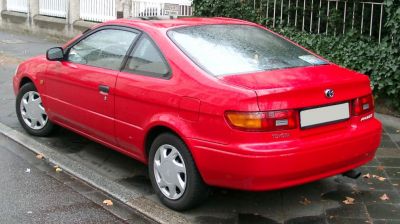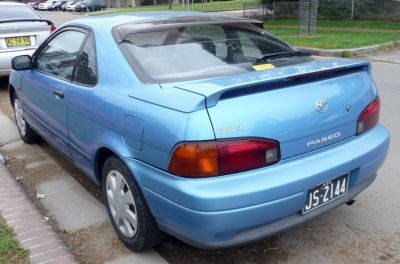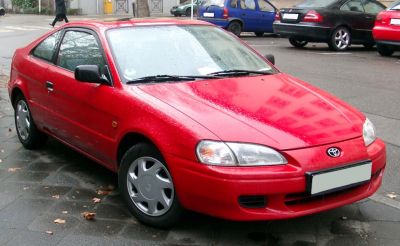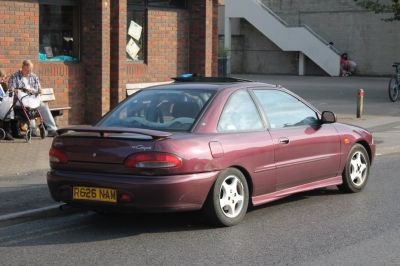 1964 Porsche 911 Coupe (F) Dimensions, Size & Specs
1964 Porsche 911 Coupe (F) Dimensions, Size & SpecsMeasurements of the 1964 Porsche 911 Coupe, engineered for optimal performance and comfort
| Dimensions | |
|---|---|
| Length: | 4147-4200 mm163.3-165.4 in13.6-13.8 ft |
| Width: | 1610-1652 mm63.4-65.0 in5.3-5.4 ft |
| Height: | 1320 mm52.0 in4.3 ft |
| Ground Clearance: | 150 mm5.9 in0.5 ft |
| Trunk Capacity (Max): | 200-500 liter7.1-17.7 cu ft |
| Weight Specifications | |
| Curb Weight: | 1020-1085 kg2249-2392 lbs |
| Maximal permitted Weight: | 1350-1400 kg2976-3086 lbs |
| Tire Specifications | |
| Rims Sizes: | Other Rims:
|
| Tire Sizes: |
|
The Porsche 911 Coupe (F), produced between 1964 and 1973, is the original generation of one of the most iconic sports cars in automotive history. This generation introduced the classic 911 silhouette that remains instantly recognizable today. The coupe body style combined compact dimensions with a sporty stance, featuring a length ranging from 4147 mm to 4200 mm (163.2 to 165.4 inches), a width between 1610 mm and 1652 mm (63.4 to 65 inches), and a height fixed at 1320 mm (52 inches). These measurements offered a sleek and aerodynamic profile suited for both road and track environments.
Weighing between 1020 kg and 1085 kg (2248 to 2393 lbs) curb weight, the 911 Coupe (F) provided a nimble driving experience aided by its lightweight construction and rear-engine layout. The maximum weight of the vehicle ranged between 1350 kg and 1400 kg (2976 to 3086 lbs), supporting safety and performance balance. This generation's luggage capacity was versatile, offering between 200 liters to a surprisingly spacious 500 liters when rear seats were folded, which was generous for a sports coupe of its time.
Ride height was set at 150 mm (5.9 inches), which helped maintain the car’s sporty ground clearance without sacrificing drivability on everyday roads. The car rode on 15-inch rims with width variations from 5.5J to 7J, matched to tire sizes like 185/70 R15 and 215/60 R15, highlighting its commitment to sporty yet stable handling.
Overall, the Porsche 911 Coupe (F) generation encapsulates the essence of classic sports car design with balanced proportions and practical usability mixed with performance-focused engineering, making it a timeless icon for Porsche enthusiasts and collectors.
Discover the standout features that make the 1964 Porsche 911 Coupe a leader in its class
Have a question? Please check our knowledgebase first.
The Porsche 911 Coupe (F), produced from 1964 to 1973, has a length that varies between 4147 mm and 4200 mm (approximately 163.3 to 165.4 inches). These dimensions reflect slight changes and model updates during the production period, but overall, the length stays just over 4 meters, providing a compact but sleek sports car profile typical of classic 911 models.
The width of the Porsche 911 Coupe (F) ranges from 1610 mm to 1652 mm (about 63.4 to 65 inches). This relatively narrow width compared to modern cars contributes to its agile road handling and classic sports car feel. Although not as wide as many contemporary vehicles, the width is sufficient for two front occupants with a tight but sporty interior layout, characteristic of early 911 models.
The height of the Porsche 911 Coupe (F) stands at 1320 mm (around 52 inches). This low height profile enhances the car's aerodynamic characteristics and keeps the center of gravity low for dynamic and responsive handling. It also contributes to the iconic sleek silhouette of the 911, but means headroom inside can be snug, which is typical for sports coupes of this era.
Depending on the exact model variant, the Porsche 911 Coupe (F) weighs between 1020 kg and 1085 kg (2249 to 2393 lbs). This relatively light weight for a sports car translates into nimble handling, lively acceleration, and an engaging driving experience. The lightweight construction combined with rear-engine design is a defining aspect of the early 911's performance character.
The luggage capacity of the Porsche 911 Coupe (F) varies from 200 liters to as much as 500 liters (approximately 7.1 to 17.7 cubic feet) when the rear seats are folded down. This flexible space allows the sports coupe to handle moderate luggage loads, especially considering its compact sports car dimensions, making it practical enough for weekend trips despite its sporty focus.
The Porsche 911 Coupe (F) has a ride height or ground clearance of 150 mm (approximately 5.9 inches). This relatively low clearance enhances road holding, cornering stability, and aerodynamics but may pose challenges on rough roads or steep driveways, which is common among classic sports cars. Drivers typically need to be cautious to avoid scraping the underbody.
Yes, the Porsche 911 Coupe (F) fits comfortably into a standard home garage. Given its length ranges from 4147 to 4200 mm (163.3 to 165.4 inches), width between 1610 and 1652 mm (63.4 to 65 inches), and a height of 1320 mm (52 inches), it is smaller in footprint than many modern vehicles. Most garages designed to fit typical sedans and compact SUVs will easily accommodate the classic 911.
The Porsche 911 Coupe (F) marked a significant evolution compared to the Porsche 356 predecessor. The 911 is longer, measuring up to 4200 mm (165.4 inches) versus the 356's approximate 4085 mm (160.8 inches), offering more cabin space and improved road presence. Width saw a slight increase, enhancing stability and interior room. Overall, the 911 balances sportier dimensions while maintaining a compact footprint relative to modern standards.
Compared to contemporaries like the Jaguar E-Type or the Mercedes-Benz 230 SL, the Porsche 911 Coupe (F) is generally more compact. For example, the E-Type is longer (over 4400 mm or 173 inches) and wider, making the 911 more agile and easier to maneuver in tight spaces. This compactness became part of its appeal, focusing on driver engagement and efficiency without compromising sports car performance.
The Porsche 911 Coupe (F) came equipped with rim sizes of R15 in widths ranging between 5.5J and 7J, and tire sizes such as 185/70 R15 and 215/60 R15. These moderately sized tires contributed to a balance of responsive handling and ride comfort. The 15-inch wheels were standard for sports cars of that era, supporting nimble cornering while providing adequate road grip and a classic look consistent with the car's design ethos.
Discover similar sized cars.

| Production: | 1995-2000 |
|---|---|
| Model Year: | 1996 |
| Length: | 4160 mm163.8 in |
| Width: | 1660 mm65.4 in |
| Height: | 1290 mm50.8 in |

| Production: | 1991-1996 |
|---|---|
| Model Year: | 1991 |
| Length: | 4145 mm163.2 in |
| Width: | 1645 mm64.8 in |
| Height: | 1295 mm51.0 in |

| Production: | 1995-1999 |
|---|---|
| Model Year: | 1996 |
| Length: | 4155 mm163.6 in |
| Width: | 1660 mm65.4 in |
| Height: | 1295 mm51.0 in |

| Production: | 1991-1995 |
|---|---|
| Model Year: | 1991 |
| Length: | 4145 mm163.2 in |
| Width: | 1645 mm64.8 in |
| Height: | 1295 mm51.0 in |

| Production: | 1997-2001 |
|---|---|
| Model Year: | 1997 |
| Length: | 4220 mm166.1 in |
| Width: | 1690 mm66.5 in |
| Height: | 1360 mm53.5 in |
